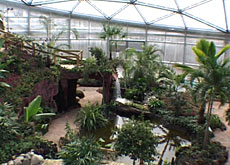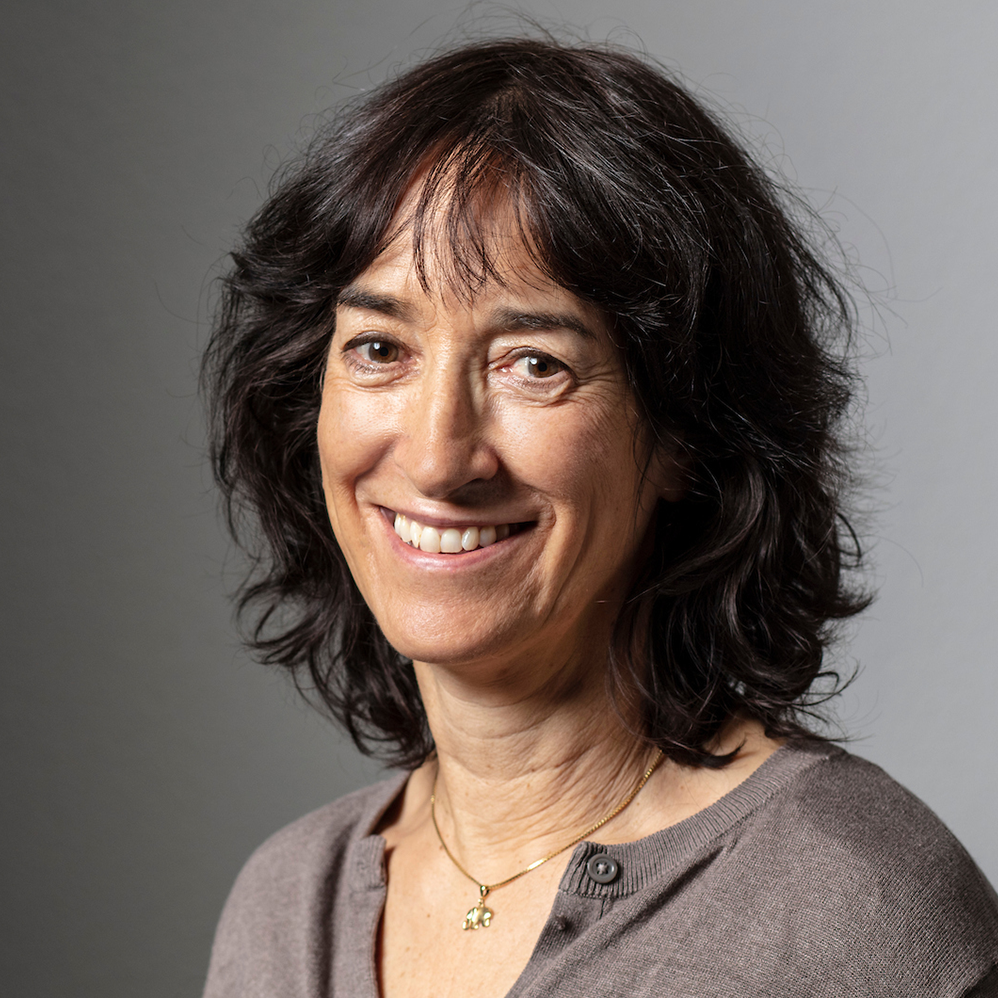Butterflies get new lease of life

Switzerland is turning into a paradise for butterflies with the opening of a hi-tech sanctuary designed to meet all their needs.
The new Papiliorama in canton Fribourg provides the ideal environment for the 1,000 brightly coloured insects brought to Switzerland from all over the world.
It is a much improved version of the original butterfly sanctuary in Marin, Neuchatel, which was beset with problems up until its closure in October last year.
The sanctuary suffered a devastating fire in 1995, and had to be completely rebuilt. Even before that, the butterflies had to battle for survival in what was becoming an increasingly hostile environment.
Design problems
The spherical design of the Marin building, its dense greenery and the presence of insect-eating birds, presented a number of dangers for the butterflies.
The jungle and the sloping walls filtered out light, so there was no encouragement for them to breed.
Many of the insects became trapped between the foliage and the walls. Others were eaten by the sanctuary birds, which unexpectedly adapted their eating habits to their new environment.
Expanding in the right direction
The directors of the Papiliorama wanted to expand its activities, while avoiding the mistakes of the past. The Marin location was restricted for space, so when the community of Kerzers offered a new, five hectare, rent-free site for an improved sanctuary, the Papiliorama Foundation jumped at the chance.
Papiliorama founder Maarten Bijleveld van Lexmond admits to having “transgressed an historical frontier”, by moving the sanctuary from French-speaking Marin to predominantly German-speaking Kerzers, a distance of 13 km as the crow flies.
“In Neuchatel, we didn’t have the option of developing the Papiliorama. Freiburg made a great offer and we had to take it”, he explained.
The new, SFr9 million complex consists of three buildings. The butterfly sanctuary – the first to be opened – has straight, south facing walls to let in as much sunlight as possible. The flora, while abundant, is spaced out, so that it cannot trap the insects or block out the light.
Only nectar-eating birds have been introduced to the sanctuary, namely Chinese dwarf quails, humming birds and nectar birds.
Tropical conditions
The new sanctuary contains over 1,000 butterflies belonging to 50 species, imported from tropical regions around the globe. They share the 40-metre wide, 12-metre high enclosure with 15 different kinds of fern and hundreds of exotic flowers. When the pond water warms up, fish will be added to the tropical mix.
A gravel path leads the visitor past steamy pools and waterfalls flanked with verdant jungle plants, where butterflies open their brightly coloured wings in the sun. Occasionally, they land on a passing tourist, attracted, perhaps, by colourful clothing.
The butterflies have no fear of predators – there are none here. Their tiny two-week-long existence can be lived out in complete luxury.
Water jets in the ceiling sporadically release a tropical type shower over the plants. With temperatures averaging 26 degrees Celsius inside the sanctuary, the showers maintain the humidity at over 80 per cent.
Biologist Chantal Derungs looks after the butterflies. She told swissinfo, “It’s absolutely fantastic. It’s ideal. The humidity is really like it should be in a tropical forest and there’s a lot of light. That’s extremely important.”
Ambitious project
The butterfly sanctuary is just a small part of the Papiliorama complex. A “Nocturama”, containing nocturnal animals, will be opened in June this year.
In spring 2004, the “Jungle Trek” should be completed, featuring exotic animals such as insect-eating birds and amphibians. An aviary, an educational garden and further nature zones are to be added later.
The project is receiving funding from the lottery, the cantonal government of Fribourg, the cantonal bank, as well as numerous Swiss and foreign institutions and businesses.
Environmental message
The Papiliorama Foundation aims to preserve tropical species while informing the public about the destruction of their natural habitats. Van Lexmond describes it as “an ambassador for threatened tropical nature”.
The sanctuary raises funds to protect endangered wildlife. Takings from Marin were used to establish an 11,000-hectare nature reserve in a dry tropical forest in Belize, Central America. The reservation contains mangroves, swamps and savannah, swarming with rare vegetation as well as endangered American storks, ocelots and anteaters.
Any funds raised by the new Papiliorama in Kerzers will also be used to support the reservation.
swissinfo, Julie Hunt
The Papiliorama is home to more than 1,000 butterflies belonging to 50 species.
The largest is the Atlas, with a wingspan of 15-20 cm
The sanctuary cost SFr9 million to build.
The 5 hectares of building land were provided for free by the community of Kerzers, canton Fribourg.
Two further buildings are to be added – a “Nocturama” and a “Jungle Trek”.
The Papiliorama will continue to raise funds for a nature reserve in Belize.
A high-tech butterfly sanctuary has been opened in Kerzers, canton Fribourg, to replace the former sanctuary 13km away in Marin.
The Papiliorama is a showcase for some of the world’s most beautiful butterflies, whose native tropical forests are being destroyed.

In compliance with the JTI standards
More: SWI swissinfo.ch certified by the Journalism Trust Initiative

You can find an overview of ongoing debates with our journalists here . Please join us!
If you want to start a conversation about a topic raised in this article or want to report factual errors, email us at english@swissinfo.ch.